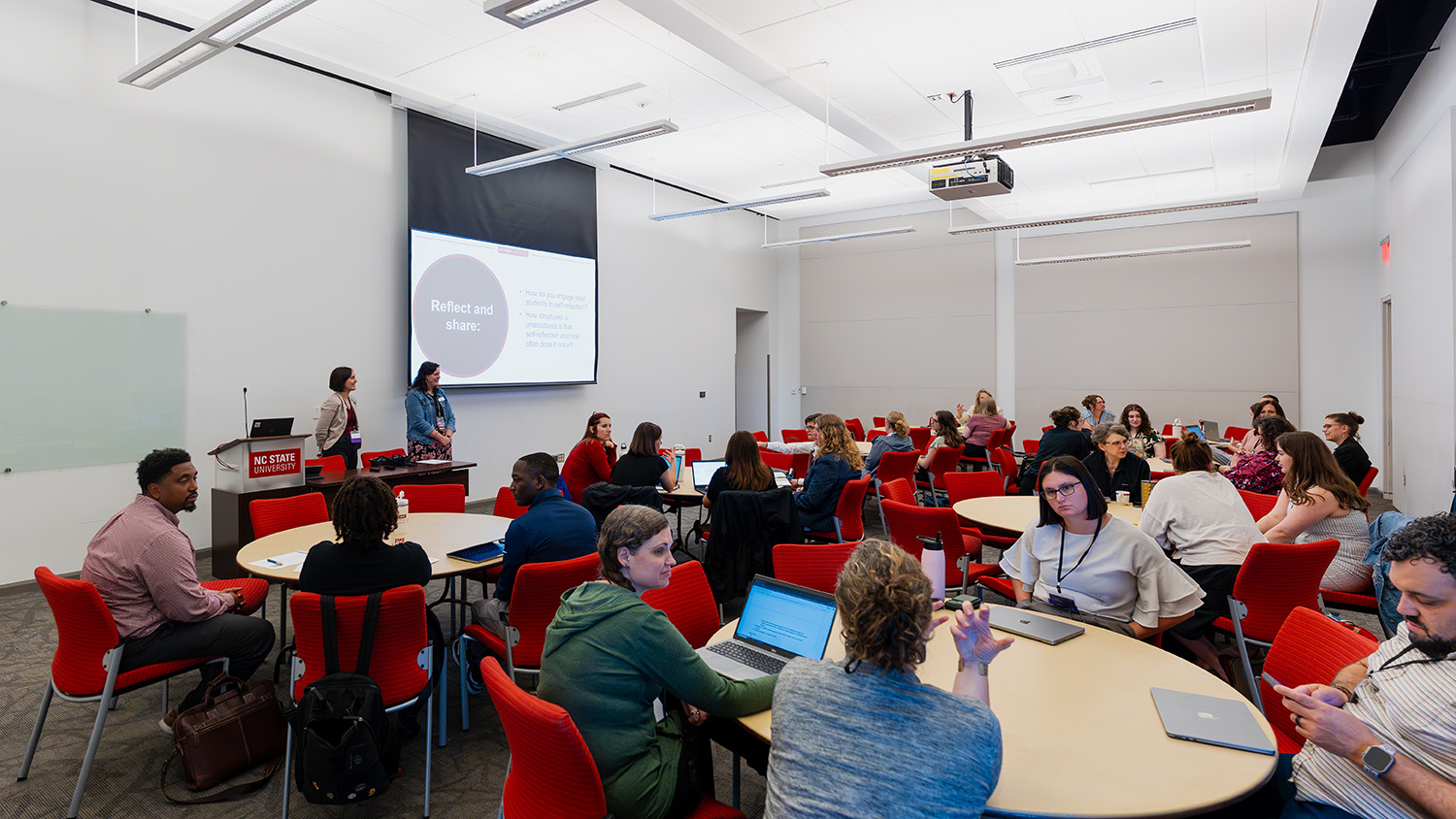Study: Intelligence Community Benefits From Collaborations, And Can Do Better

An analysis of U.S. intelligence programs aimed at collaborating with academic and industry partners finds that these collaborations are valuable for addressing complex intelligence challenges. The study also notes that institutional silos, lack of information sharing and lack of trust are obstacles to getting the most out of these collaborative efforts.
The researchers point to the Laboratory for Analytic Sciences (LAS) as the first long-term, collocated attempt at collaboration between the intelligence community, academia and industry. As such, the study authors report that the LAS holds promise as a laboratory that can be used by the intelligence community and its partners to develop effective approaches to cooperation and collaboration.
The LAS is a research partnership between North Carolina State University and the National Security Agency, based on NC State’s campus.
“We looked at five collaborative intelligence programs,” says Beverly Tyler, a professor of management, innovation and entrepreneurship at NC State who is co-author of a paper on the work. “Do any of the five provide an ideal model for how cross-sector, interdisciplinary collaborations on intelligence should work? No. But they do offer useful lessons about what can and should be considered to develop successful collaborations: time, effort, leadership, strong communication and dedicated resources.”
“And the payoff for such collaborations can be invaluable,” Tyler says. “For example, the LAS was created in 2013, and it has received a number of awards for its work – including two National Intelligence Awards for mission contributions.”
“Given today’s fiscal realities and intelligence challenges, the need for cross-sector collaboration is only going to increase,” says Kathleen Vogel, an associate professor of public policy at the University of Maryland and lead author of the paper.
For this study, the researchers drew on interviews with members of the intelligence and academic communities, as well as reports and journal articles related to LAS and four other collaborative intelligence programs. Their analysis led them to identify certain key themes related to intelligence collaborative efforts, as well as factors that they identified as being essential to success.
One of the key themes was that the hybrid organizations used by the intelligence community for cross-sector, interdisciplinary collaborations are particularly vulnerable to budget cuts. They also found that these collaborations can vary widely in terms of how interdisciplinary they are – and that the broader the interdisciplinary focus, the less likely they are to survive.
However, the researchers say that the LAS gives the intelligence community an opportunity to learn more about how it can design and maintain a more complex program that incorporates a broader interdisciplinary collaboration over a longer period of time.
The study also identified a number of factors that are key to the success of collaborative intelligence programs. Four of those factors are:
- High-level support within the collaborating organizations;
- Long-term commitment by collaborating organizations to accomplish the program’s intended goals;
- Internal communications mechanisms to evaluate how ongoing research efforts are going; and
- Open lines of communication with the relevant intelligence organizations to ensure that research remains mission-focused, relevant and meaningful.
“We want to be clear that we found all collaborative efforts by the intelligence community to be valuable,” Tyler says. “Our goal here is not to nitpick what has been done. It’s simply to identify ways to make these programs even better moving forward.”
The paper, “Interdisciplinary, Cross-sector Collaboration in the US Intelligence Community: Lessons Learned from Past and Present Efforts,” is published in the journal Intelligence and National Security. Though neither study author is currently affiliated with the LAS, much of the work that led to this journal article was done with support from the LAS.
-shipman-
Note to Editors: The study abstract follows.
“Interdisciplinary, Cross-sector Collaboration in the US Intelligence Community: Lessons Learned from Past and Present Efforts”
Authors: Kathleen M. Vogel, University of Maryland at College Park; Beverly B. Tyler, North Carolina State University
Published: June 11, Intelligence and National Security
DOI: 10.1080/02684527.2019.1620545
Abstract: How does one design and sustain interdisciplinary, cross-sector collaboration to improve intelligence results for twenty-first century security threats? Because the research, technology, and business advances—once the purview of governments—are prevalent in industry and academia, many intelligence community (IC) elements seek insights into how to enhance interdisciplinary and cross-sector collaboration. However, there is limited institutional understanding of how to design, establish, and sustain the successful hybrid organizations required for innovation. This paper will analyse five past and present initiatives designed to create interdisciplinary, cross-sectoral collaboration within different agencies of the US IC and external elements. We will discuss key features of each effort, their successes and challenges, identify common themes and key success factors, and, propose which collaborative model might be most advantageous for a particular type of project based on project constraints. In so doing, we provide direction for IC leaders seeking to improve academia-industry-intelligence partnerships for future planning on intelligence-funded collaborations.
This post was originally published in NC State News.
- Categories:


